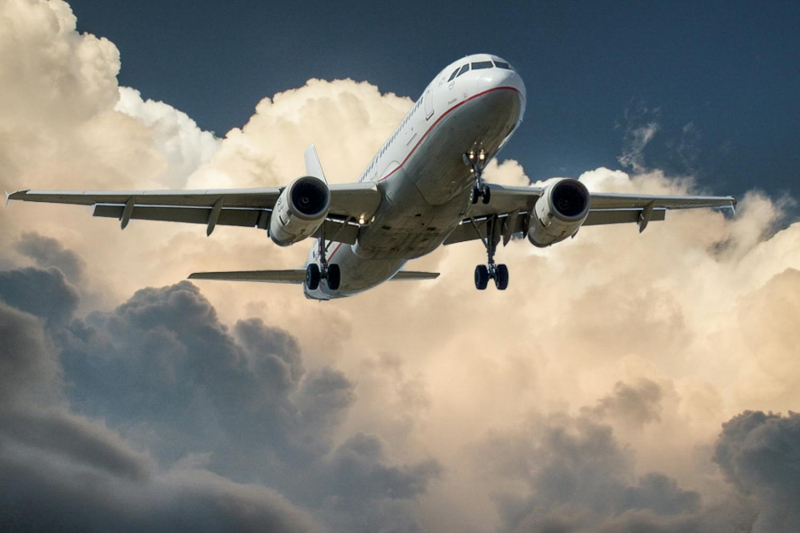
© Pixabay/Pexels
Aviation today finds itself at a decisive turning point in its history. Faced with growing environmental challenges and the imperative to drastically reduce carbon emissions, the aeronautics industry is actively exploring cleaner alternatives. Among these, hydrogen is emerging as a particularly promising energy vector that could potentially transform the future of air transport. Companies such as ZeroAvia and its Dornier228 or H2FLY and its HY4 have confirmed through their encouraging results that hydrogen could well be the aircraft fuel of tomorrow.
Certainly, the recent disappearance of Universal Hydrogen, a pioneering company in this field, has temporarily darkened the horizon. Nevertheless, this failure has in no way dampened the enthusiasm of researchers and industrialists. On the contrary, it even seems to have revived their determination to continue their research. Thus, efforts continue unabated, fueling new hopes for the advent of truly clean and sustainable regional aviation.
A setback for Universal Hydrogen, but innovation continues
Despite the recent failure of Universal Hydrogen, a California-based company that hoped to revolutionize regional aviation through the use of hydrogen, the aviation industry is resolutely continuing its quest for a greener future. This start-up, which had to close its doors after five years of existence and lay off its staff in Hawthorne and Toulouse, nevertheless leaves behind an important legacy.
At the same time, the European IMOTHEP program, launched in 2020, bringing together a group of 33 major industry players, continues to explore the possibilities offered by hybrid electric propulsion, with hydrogen remaining a central element of this new industrial vision.
At the heart of this, Philippe Novelli, coordinator of IMOTHEP at Onera, optimistically announces the confirmation of the feasibility of a first hybrid electric aircraft by 2035. A decisive step was taken on May 2, when a small-scale prototype took flight in the Italian sky, thus proving the viability of this promising technology.
Novelli explains: “We studied two concepts for regional aircraft and two for short- and medium-haul aircraft [Editor's note: SMR]”. This research aims to develop, on the one hand, an ATR42 type aircraft capable of transporting 42 passengers over a distance of 600 nautical miles (approximately 1,111 km), and on the other hand, an aircraft similar to the Airbus A320 in terms of capacity, but with a range reduced to 800 nautical miles (1,481 km).
200% Deposit Bonus up to €3,000 180% First Deposit Bonus up to $20,000Technological challenges: a complex balance to find
The work carried out within the framework of the IMOTHEP programme has made it possible to identify two different approaches for the propulsion of regional aircraft. On the one hand, theparallel hybridisation concept combines conventional turboprops with electric motors powered by accumulators. This configuration could, according to estimates, allow electric units to contribute up to 30% of the overall power. However, the increased mass due to the batteries is a significant obstacle.
On the other hand, the more daring turboelectric system proposes an architecture where a thermal engine drives an alternator providing energy to electric thrusters that provide all of the thrust. Novelli emphasizes: “This concept may seem absurd, but it does not require a battery and allows the propulsion to be distributed across the aircraft, which improves propulsive efficiency“.
For larger aircraft, the problem is even more complex. The parallel hybrid option was ruled out due to the prohibitive mass of the required accumulators; the investigations therefore focused on the turboelectric solution, which offers promising synergies with the cell, particularly in terms of aerodynamics.
However, these innovations involve profound changes to the architecture of current aircraft. Among the most avant-garde concepts is a project providing for the integration of 24 electric nacelles along the wings, requiring a greater wingspan.
However, these technological advances are accompanied by colossal challenges, particularly in terms of electrification. The energy needs of large carriers far exceed the current capabilities of on-board systems. Novelli specifies: “Today, we do not exceed 540 volts. We think we will soon be able to reach 800 volts, but our work on SMRs leads to distribution systems at 3,000 volts. And there, the associated problems are severe ». These technical constraints constitute a major obstacle to the rapid adoption of these revolutionary technologies in large-capacity commercial aviation.
It is becoming increasingly clear that developing hydrogen-powered aircraft is a reality that is becoming more and more tangible every day, but only on regional routes; at least for the moment. As for long-haul flights, we are still a long way from that, but the sector has never progressed as much as in the last ten years. There is therefore still a lot of room for improvement.
- Aviation is exploring hydrogen as a promising solution to reduce emissions, despite setbacks such as the bankruptcy of Universal Hydrogen.
- The IMOTHEP program is developing concepts for hybrid-electric aircraft, aiming for a first operational model by 2035.
- The technical challenges remain considerable, particularly for large aircraft, but progress over the past decade suggests a promising future.
📍 To not miss any news from Lemon Squeezer, follow us on Google News and WhatsApp.
[ ]

